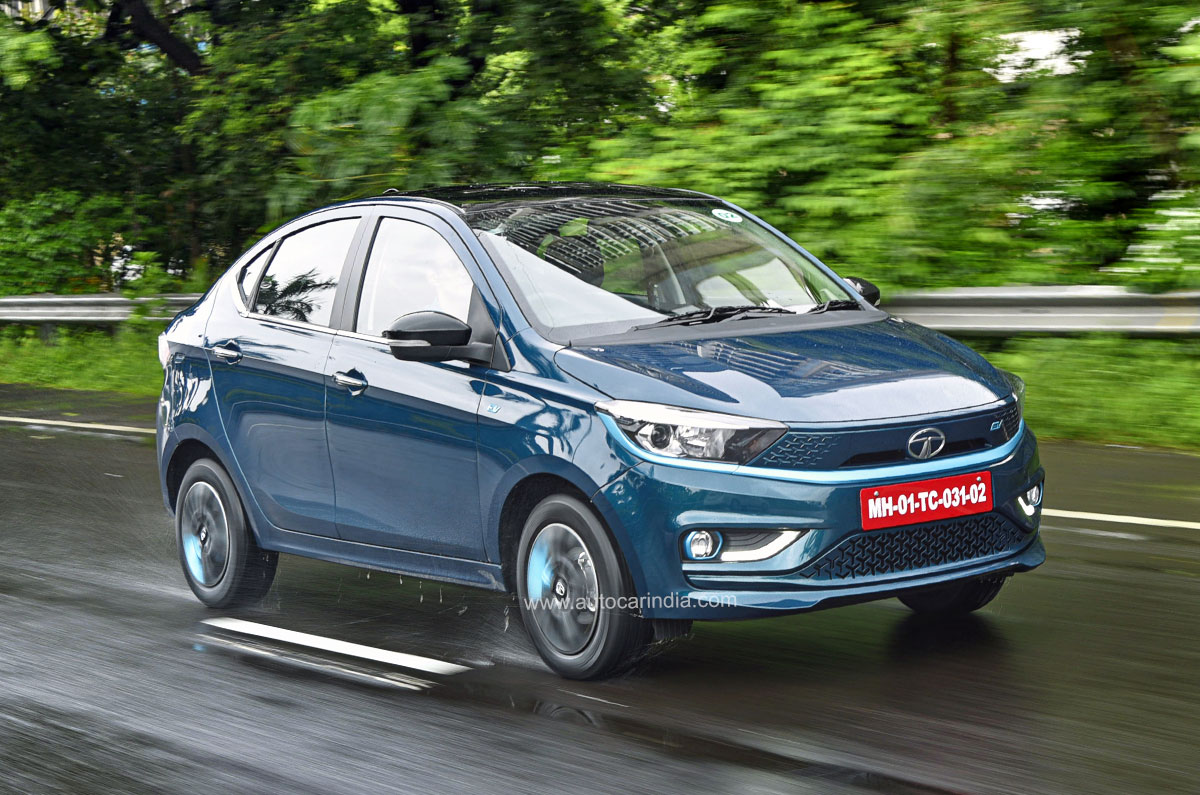
After dominating the electric vehicle (EV) space in India with the Nexon EV, Tata has launched its second all-electric offering, the Tigor EV, to continue its rule. Not to be confused with the all-electric version of this compact sedan (now rebranded as the Xpress-T) that continues to cater to the commercial vehicle (CV) segment, this 2021 Tigor EV is the passenger vehicle (PV) iteration which we’ll focus on.
The Tigor EV features a more sophisticated electrical architecture compared to its CV sibling. It gets a 350V electrical system and a 26kWh liquid-cooled battery pack, which is paired with a permanent magnet synchronous motor. Launched at an introductory price, ranging from Rs 11.99 lakh to Rs 13.14 lakh (ex-showroom), the Tata Tigor EV has pipped the Nexon EV (Rs 13.99 lakh-Rs 16.85 lakh) to become the most affordable electric car to go on sale. So, the question is, will the Tigor EV be as successful as the Nexon EV? We put it through our exhaustive tests to find the answer.
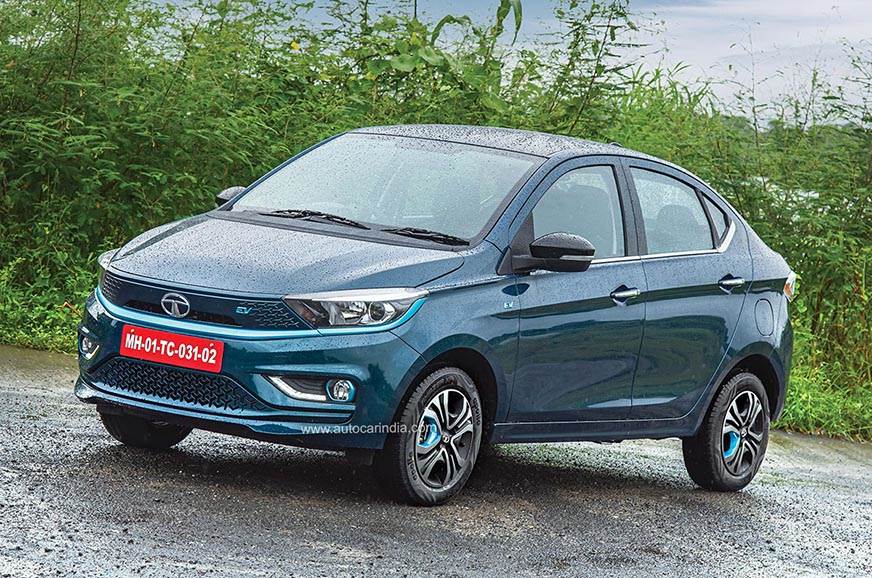
There’s little to talk about when it comes to EV-specific exterior and interior enhancements. On the outside, an enclosed gloss black panel mimics a front grille and features a neatly executed tri-arrow pattern, with the latter also marking its presence on the front air-dam. Other electric-specific changes include a light blue ‘humanity line’ that underlines the grille area and headlamps. These highlights also make their way around its fog lamps, on the wheel covers and on the rear bumper. This Tata proudly flaunts its green credentials with ‘EV’ badges scattered across its exteriors.
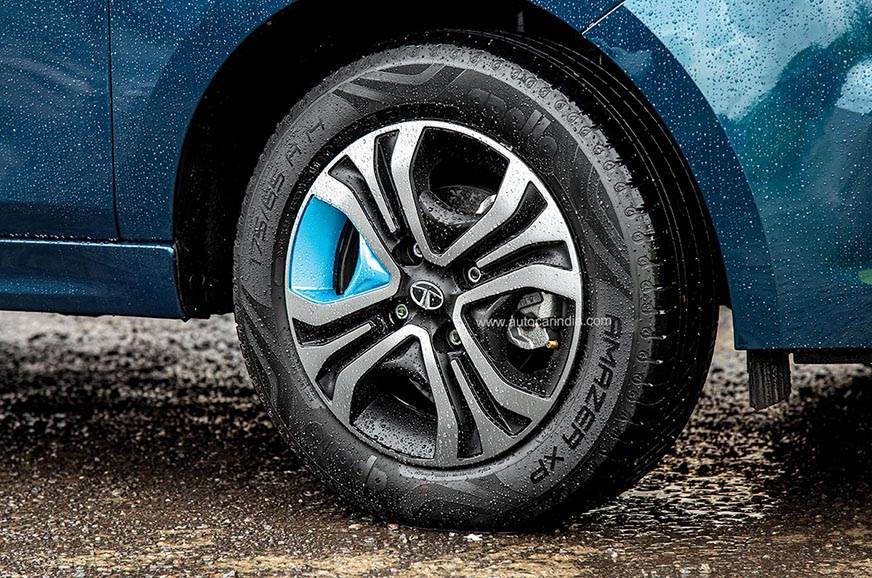
Carrying forward a similar theme inside are light blue accents on the dashboard, as well as a tri-arrow pattern on the fabric seats. The biggest change on the inside is the new rotary gear selector knob, similar to the Nexon EV’s. This selector is slow to respond, and the shift between D and R, in particular, demands your patience. There’s also a new digital speedometer to speak of, which appears a bit busy in terms of visual elements and displays only essentials like battery percent, range and odometer. The bar to its left shows the power consumption, while the one on the top-right displays charge, and the one on the bottom-right shows regeneration intensity. Its new 7.0-inch touchscreen is easy to operate and, in-line with the current trend, it gets connected features via a mobile app that include location-based services, remote control for the air-con and door locks, among 35 others.
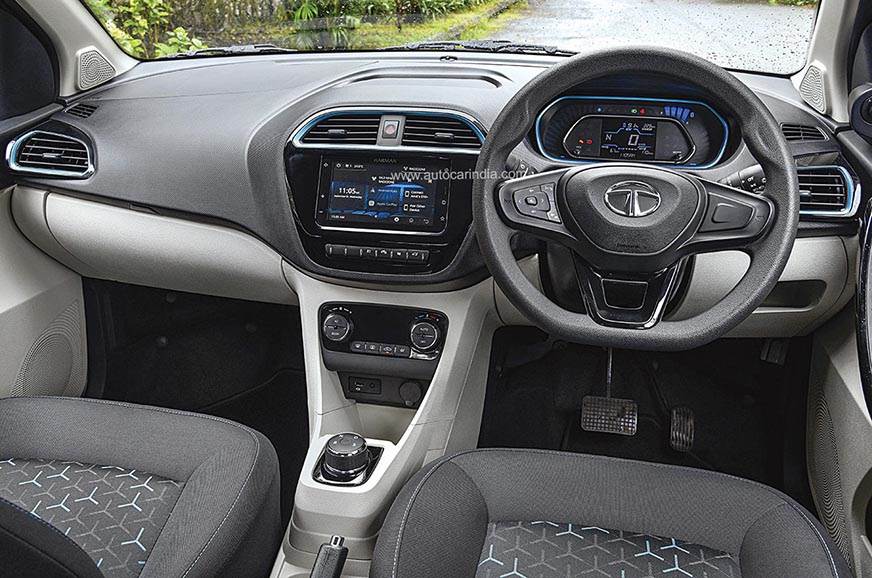
Like in the standard car, the seats are wide and accommodating, although the cushioning is a bit firm and the front passenger is seated rather high in this sedan. There’s adequate legroom in the rear, but headroom for taller occupants is limited due to a sloping roofline, and the seat’s narrow width makes it ideal for two adults.
In this EV, the boot area has been reduced by 103 litres (compared to its petrol version) to 316 litres, as the spare wheel is placed vertically on the floor, which eats away into usable cargo space. The reason for this arrangement is the Tigor EV’s unique split battery setup, wherein one part of the battery rests in the fuel tank location, while the other is placed beneath the boot floor, in the spare wheel well.
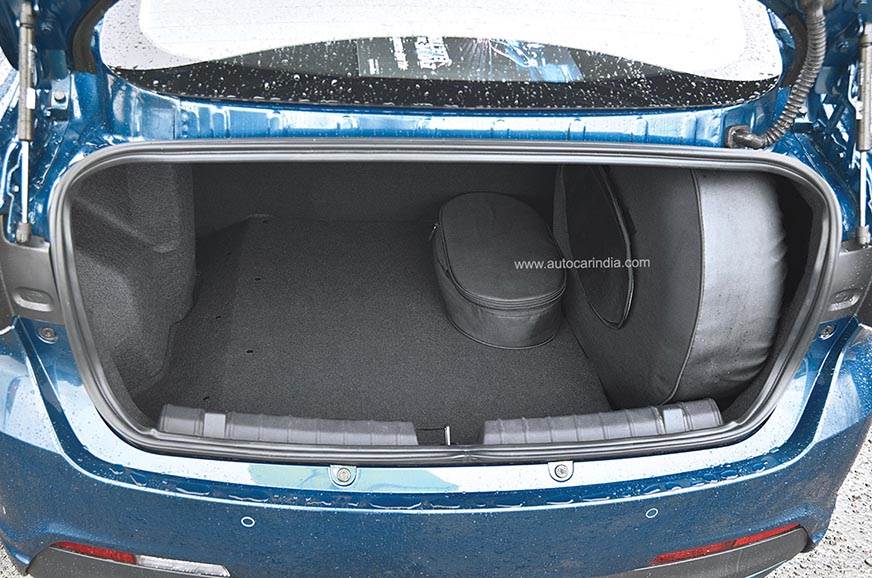
The EV’s structure gets additional reinforcements in some places, comprising of higher strength materials than the petrol version. Even the rear end has been further strengthened to support the battery mounting, enhancing its rear crash safety in the process. As a result of the additional reinforcements and its twin-battery layout and motor, kerb weight has increased by nearly 200kg, tipping scales to 1,235kg.
Like in the case of the Nexon EV, the Tigor EV’s battery and motor conform to IP67 standards, which mean they have passed the ingress protection test of being submerged under one metre of water for 30 minutes. And to further boost buyer confidence, Tata is offering an eight-year or 1,60,000km warranty on the battery pack and motor, in addition to the three-year or 1,25,000km standard warranty. What’s also reassuring is that the battery pack has been certified with an AIS-048 rating – the most stringent safety test in India, which includes nail penetration up to cell level, a crush test, a fire test and more.
The Tigor EV comes with two drive modes – the default setting being ‘Eco’ and the other being ‘Sport’. Drivers will only be able to extract its max power and torque of 75hp and 170Nm in Sport mode, while in the default setting, the car is restricted to about 75 percent of its max potential. Factor in this EV’s 200kg heavier weight, however, and that translates into an unhurried real-world performance. Unlike most EVs that serve an electrifying performance right from the get-go, the Tigor EV adopts a leisurely approach. And while it’ll easily manage the daily urban grind, it occasionally struggles to keep up with faster moving traffic. Sport mode improves drivability to a great extent, with crisper responses, and cuts in its acceleration times by almost half, but it comes at the cost of higher power consumption, thus taking a toll on its range. What’s more is that the Tigor EV sprints to 60kph in Sport mode rather rapidly, beyond that, however, acceleration is slow and almost every petrol-automatic compact sedan will out-drag this EV to 100kph. What no petrol sedan can match though is its smoothness and refinement, which is what sets this EV apart.
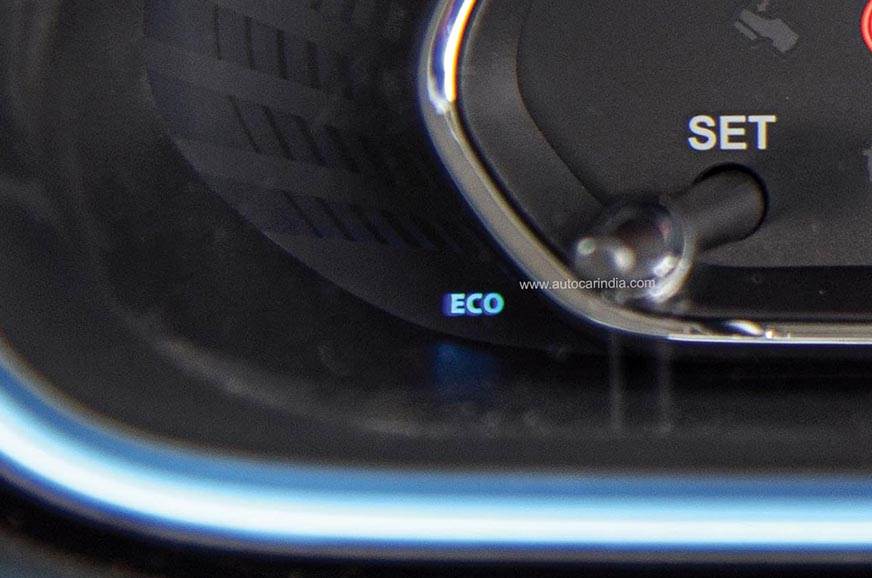
The intensity of regenerative braking cannot be adjusted and it begins to decelerate as soon as you lift off the accelerator pedal. While you will get used to this at low and city speeds, on the highway, this reduction of speed doesn’t feel as natural or as gradual as other EVs, and owners will always need to be on-throttle while cruising or hypermiling (driving in the most efficient way possible).
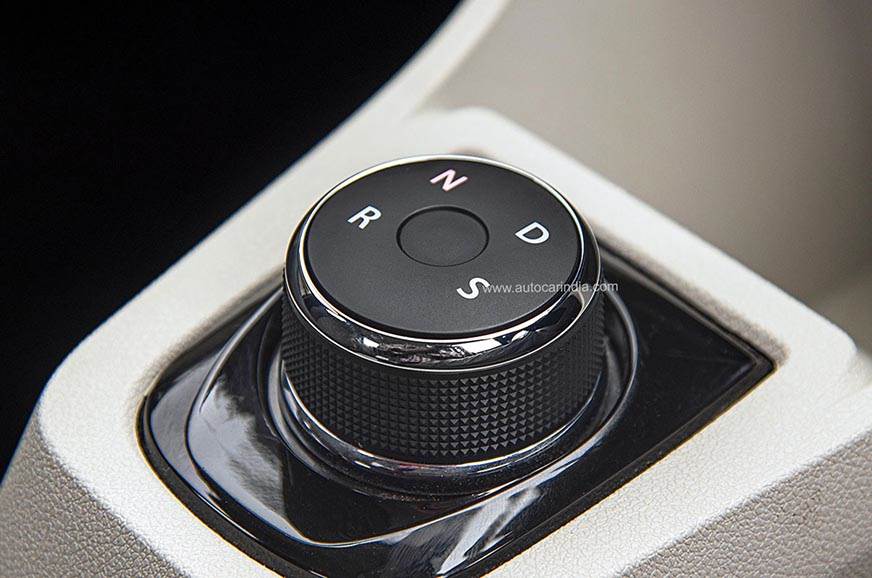
The Tigor EV’s suspension comprises of most of its petrol version’s components, but on account of added weight, it gets stiffer springs and reworked damper tuning. Get past that initial bit of firmness and this EV soaks up bumps well and maintains its composure at all speeds. Passengers at the rear, however, will feel road shocks more than those at the front, due to its firm rear set-up. Its light steering is easy to twirl at low and parking speeds, and it weighs up consistently as you go faster. Combine that with a pointy front-end and a stiff suspension set-up, and the Tigor EV tackles corners in a benign but confident manner. The brake pedal feels a bit artificial and, with a heavier load to anchor, in a panic braking scenario, going from 80-0kph takes 32.16m, which is nearly 4m more than the petrol Tigor.
Our range test was carried out in the default drive setting, with the climate control set to Eco mode. With its top-speed capped at 116kph (121kph on the speedo), and by maintaining steady expressway speeds between 80 and 100kph, it returned an efficiency of 6.98km per kWh, translating into a highway range of 181km (6.89km/kWh multiplied by 26kWh) on a full charge. In stop-go city driving scenarios, it manages 7.69km per kWh, translating into a city range of 200km (7.69km/kWh multiplied by 26kWh).
In sub-10 percent battery level, which we went to on multiple occasions, the motor further cuts down power and limits top speed to 57kph (on the speedometer) to maximise range.

On using a 25kW Tata Power DC fast charger, we recouped 76 percent of battery charge (from 8 to 84 percent) in a 62 minutes. This service costed Rs 353.84, translating into a running cost of roughly Rs 2.2 per kilometre. It must be noted that topping up the battery from 95 to 100 percent takes around 30 minutes, as the car’s battery management system (BMS) reduces the charging rate to preserve the battery’s life.
To fully charge the battery from 8 percent using a 15A home charger, it will take a little over 10 hours. Home charging will cost users between Rs 5 and Rs 8 per unit consumed, depending on the electricity provider and the slab they fall under. Taking the highest slab of Rs 8 into account, each full charge, from 0-100 percent, will theoretically cost users Rs 208 (Rs 8 multiplied by 26 units), resulting in a running cost of Rs 1.10 per kilometre of average city-highway usage, which is significantly lower than the Tigor petrol-auto’s Rs 7.55 per kilometre running cost.
Being the most affordable all-electric offering in the market, along with getting state government subsidies for faster adoption of electric vehicles, will certainly draw prospective buyers towards the Tigor EV. The economics, however, aren’t as attractive when you take into account the Rs 3 lakh to Rs 4 lakh premium it commands over its petrol-automatic counterpart. To put it into perspective, users driving 1,000km per month will take over four years to recoup that initial premium, and it is only then will they benefit from the EV’s lower running costs.
The Tigor’s interiors don’t feel special enough for a car costing north of a million rupees. It also misses kit like LED headlamps, sunroof, and more, which others offer at this price. EV buyers will certainly see merit in its smooth and refined drive experience, its green credentials and its healthy real-world range of 191km (average), which makes it a capable city commuter. Its unhurried performance on the open road, however, doesn’t make it feel as effortless as the Nexon EV, and even though the latter is more expensive, as a package, it is far more rounded and more desirable in comparison.
https://ift.tt/3jbnZvv




This content are very helpful
ReplyDeleteThis content are very helpful